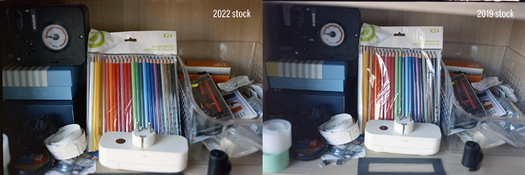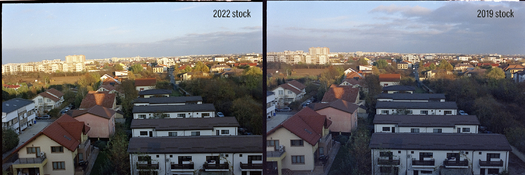Alain Deloc
Member
Hi all,
I have some motion picture reels in my freezer since 2019. However, even if stored at -13 Celsius, what's left from my Vision3 500T reel managed to expire somehow. The 500T stock lost some dynamic range, some details in the shadows and also is showing a more visible grain. I am usually mixing my own ECN2 chemistry using Kodak's published formulas and I was thinking how I could modify the ECN2 developer in order to reduce a bit the grain? I know that the dynamic range can't be recovered once a stock started to degrade, but maybe the grain can be managed somehow.
Just out of curiosity, I made a 2-stock 500T comparison, using a 2022 strip and a 2019 strip, stitched with transparent tape, loaded in the same canister, then shot with same lens and camera with identical exposure, then developed in the same tank and finally scanned and inverted together to see the differences between stocks. Individual frame scans usually can not reveal the differences because histograms are auto-adjusted to white and black point. Anyway I am attaching some scans just for anyone curious to see the level of expiration and grain and my question is regarding the developer formula : how it can be modified to reduce the grain ?
I have some motion picture reels in my freezer since 2019. However, even if stored at -13 Celsius, what's left from my Vision3 500T reel managed to expire somehow. The 500T stock lost some dynamic range, some details in the shadows and also is showing a more visible grain. I am usually mixing my own ECN2 chemistry using Kodak's published formulas and I was thinking how I could modify the ECN2 developer in order to reduce a bit the grain? I know that the dynamic range can't be recovered once a stock started to degrade, but maybe the grain can be managed somehow.
Just out of curiosity, I made a 2-stock 500T comparison, using a 2022 strip and a 2019 strip, stitched with transparent tape, loaded in the same canister, then shot with same lens and camera with identical exposure, then developed in the same tank and finally scanned and inverted together to see the differences between stocks. Individual frame scans usually can not reveal the differences because histograms are auto-adjusted to white and black point. Anyway I am attaching some scans just for anyone curious to see the level of expiration and grain and my question is regarding the developer formula : how it can be modified to reduce the grain ?















